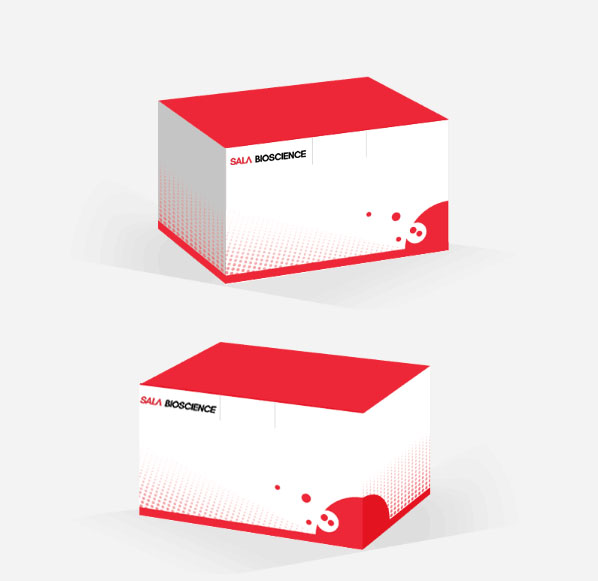Peroxidase (POD) Activity Assay Kit/SLBC0090
- Price:Negotiable
Product Detail
Peroxidase (POD) Activity Assay Kit
Note: Take two or three different samples for prediction before test.
Operation Equipment: Spectrophotometer
Catalog Number: SLBC0090
Sizes:50T/48S
Components:
Extract solution: 60 mL×1. Storage at 4℃.
Reagent I: 40 mL×1. Storage at 4℃.
Reagent II: 0.04 mL ×1. Storage at 4℃. Centrifuge before use. Take 0.01 mL of reagent II and add 3.2 mL of reagent I, mix it for later use (about 24T). Prepare it for immediate use, or it can be prepared in proportion according to the sample volume.
Reagent III: 10 mL×1. Storage at 4℃.
Product Description:
Peroxidase (POD, EC 1.11.1.7) widely exists in animals, plants and microorganisms. It can catalyze the oxidation of phenols and amines by hydrogen peroxide, and has the dual effect of eliminating toxicity of hydrogen peroxide, phenols and amines. In the presence of hydrogen peroxide, POD can catalyze H2O2 oxidize specific substrates to produce one substance which has a absorption at 470 nm.
Reagents and Equipment Required but Not Provided:
Spectrophotometer, desk centrifuge, transferpettor, 1 mL glass cuvette, mortar/homogeniser, ice and distilled water.
Procedure
I. Sample preparation:
A. Bacteria or cells
Collecting bacteria or cells into the centrifuge tube, the supernatant is discarded after centrifugation. It is suggested to take about 5 million bacteria/cell and add 1 mL of Extract solution. Bacteria or cell is splitted by ultrasonication (Power: 20% or 200 W, work time 3s, interval 10s, repeat for 30 times). Centrifuge at 8000 rpm and 4℃ for 10 minutes, the supernatant is used for test.
B. Tissue
It is suggested to take about 0.1 g of tissue and add 1 mL of Extract solution, fully grinding on ice. Centrifuge at 8000 rpm for 10 minutes at 4℃, the supernatant is used for test.
C. Serum (plasma) sample: Detect sample directly.
II. Determination procedure:
1. Preheat spectrophotometer for 30 minutes, adjust wavelength to 470 nm, set zero with distilled water.
2. Place Reagent I, Reagent II and Reagent III at 37℃ (mammal) or 25℃(other species) for 10 minutes before determination.
3. Add reagents with the following list:
Name of reagent (µL) | Test tube |
Sample | 15 |
Distilled water | 270 |
Reagent I | 520 |
Reagent II | 130 |
Reagent III | 135 |
The above reagents are added into 1 mL glass cuvette in sequence, immediately mixed and timed. The absorbance values A1 for 30 s and A2 for 90s at 470 nm are recorded, ΔA=A2-A1.
III. Calculations:
I. Serum (plasma) sample
Unit definition: One unit of enzyme activity is defined as the amount of enzyme catalyzes the absorbance of 0.01 change at 470 nm in the reaction system per minute every milliliter serum(plasma).
POD(U/mL)=ΔA×Vrv÷Vsv÷0.01÷T =7133×ΔA
II. Tissue, bacteria or culture cells
A. Protein concentration
Unit definition: One unit of enzyme activity is defined as the amount of enzyme catalyzes the absorbance of 0.01 change at 470 nm in the reaction system per minute every milligram protein.
POD(U/mg prot)=ΔA×Vrv÷(Vsv×Cpr)÷0.01÷T =7133×ΔA÷Cpr
B. Sample weight
Unit definition: One unit of enzyme activity is defined as the amount of enzyme catalyzes the absorbance of 0.01 change at 470 nm in the reaction system per minute every gram tissue.
POD(U/g fresh weight)=ΔA×Vrv÷(W× Vsv÷Vs)÷0.01÷T =7133×ΔA÷W
C. Cell amount
Unit definition: One unit of enzyme activity is defined as the amount of enzyme catalyzes the absorbance of 0.01 change at 470 nm in the reaction system per minute every 10 thousand bacteria or cells.
POD(U/104 cell)=ΔA×Vrv÷(500×Vsv÷Vs)÷0.01÷T =14.27×ΔA
Vrv: Total reaction volume, 1.07 mL;
Vsv: Total supernatant volume, 0.015 mL;
Vs: Extract solution volume, 1 mL;
T: Reaction time, 1 minute;
Cpr: Sample protein concentration, mg/mL;
W: Sample weight, g;
500: Total number of bacteria or cells, 5 million.
Note:
1. If there are many samples to be determined at one time, the mixture of Reagent I, II, III and distilled water can be prepared in proportion, and the mixture can be placed at 37℃ (mammalian) or 25℃ (other species) for more than 10 minutes. 15 μL of sample and 1055 μL of mixture can be added for determination.
2. If ΔA is less than 0.005, the reaction time can be extended to 5 minutes. If ΔA is greater than 0.5 or there are more bubbles in the reaction solution, the sample can be diluted with the extract and determined, and the calculation formula is multiplied by the corresponding dilution multiple.
Recent Product Citations:
[1] Yin Y J, Chen C J, Guo S W, et al. The fight against Panax notoginseng root-rot disease using zingiberaceae essential oils as potential weapons[J]. Frontiers in plant science, 2018, 9: 1346.
[2] Dou S, Liu S, Xu X, et al. Octanal inhibits spore germination of Penicillium digitatum involving membrane peroxidation[J]. Protoplasma, 2017, 254(4): 1539-1545.
[3] Li B, Ding Y, Tang X, et al. Effect of L-Arginine on Maintaining Storage Quality of the White Button Mushroom (Agaricus bisporus)[J]. Food and Bioprocess Technology, 2019, 12(4): 563-574.
[4] Yanan Wang,Chengzhen Liang,Zhigang Meng,et al. Leveraging Atriplex hortensis choline monooxygenase to improve chilling tolerance in cotton. Environmental and Experimental Botany. June 2019;162:364-373.(IF3.712)
[5] Yanjiao Yin,Chuanjiao Chen,Shiwei Guo,et al. The Fight Against Panax notoginseng Root-Rot Disease Using Zingiberaceae Essential Oils as Potential Weapons. Frontier in Immunology. October 2018;(IF4.716)
Referenes:
[1] Reuveni R . Peroxidase Activity as a Biochemical Marker for Resistance of Muskmelon ( Cucumis melo ) to Pseudoperonospora cubensis[J]. Phytopathology, 1992, 82(7).
[2] Doerge D R , Divi R L , Churchwell M I . Identification of the Colored Guaiacol Oxidation Product Produced by Peroxidases[J]. Analytical Biochemistry, 1997, 250(1):10-17.
